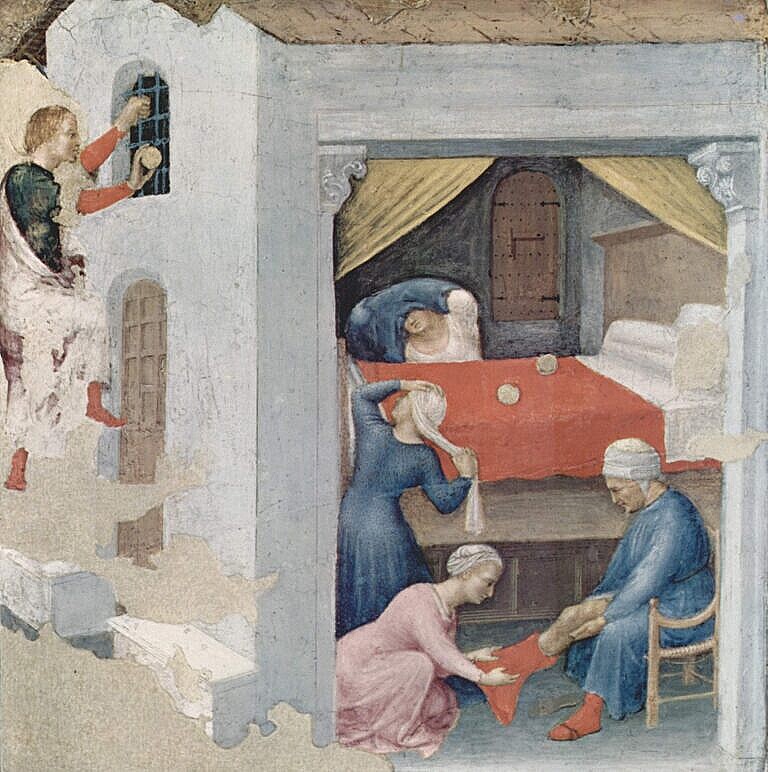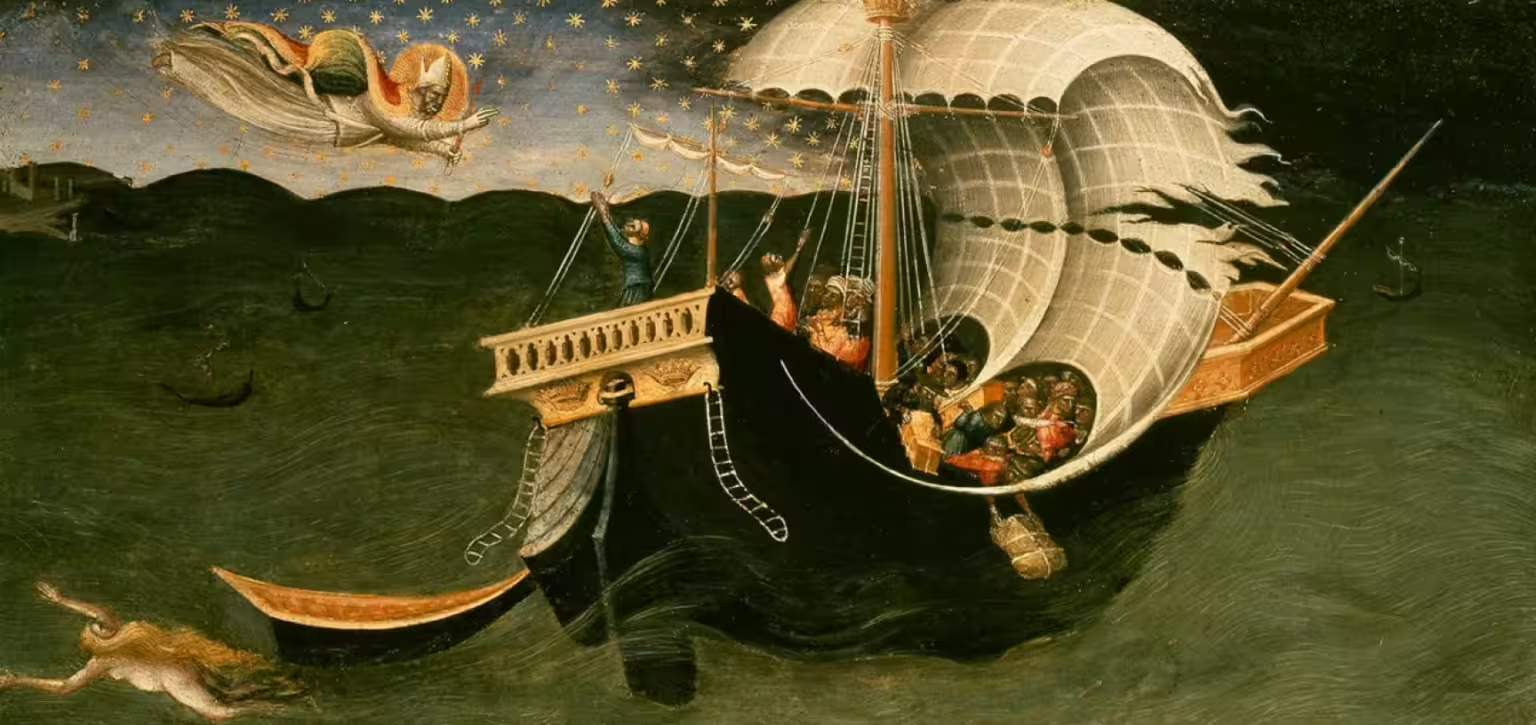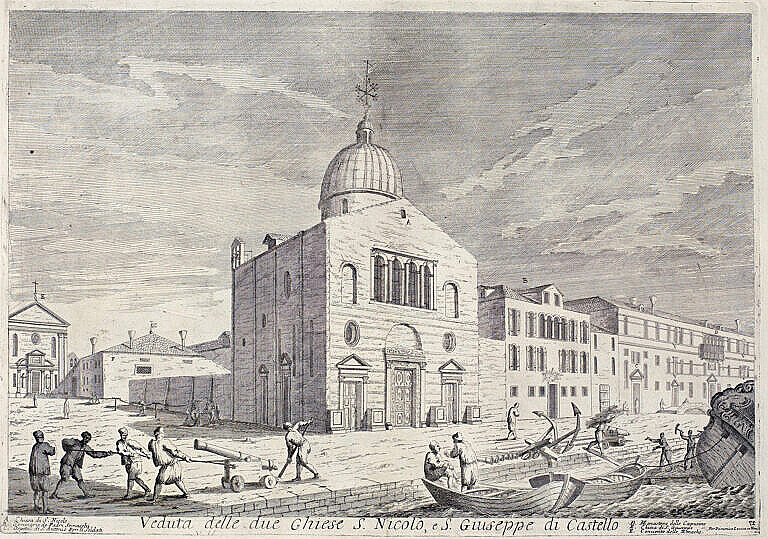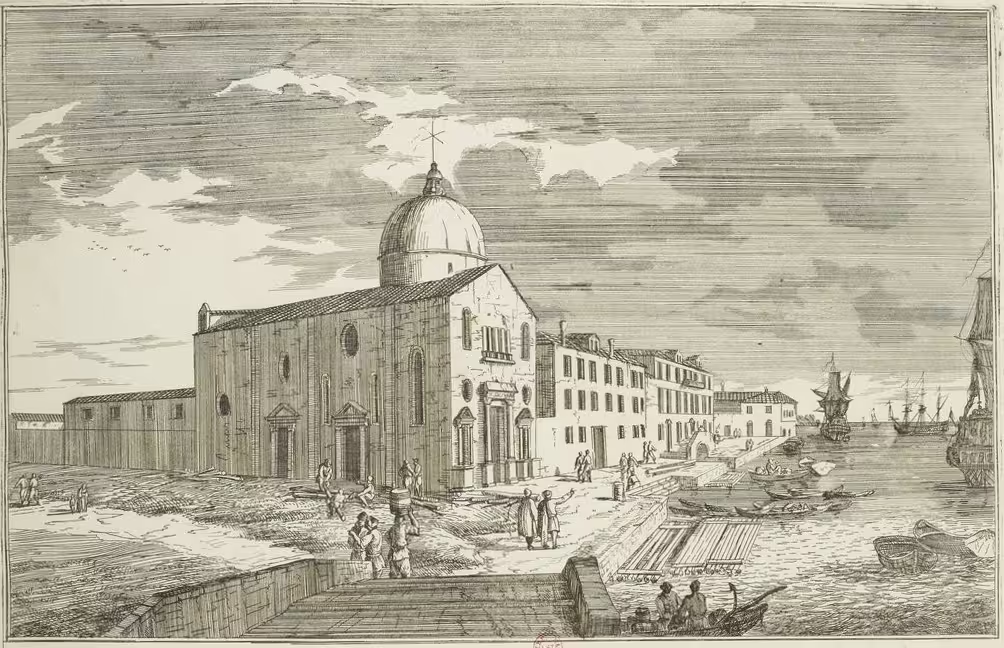Today is the day of St Nicholas, who died on December 6th, 343.
Different languages have distorted his name in different ways. In Italy he’s San Nicola di Bari, but in Venice he’s San Nicolò. Likewise, for the Dutch, he’s Sinte Klaas.
The Dutch brought him to North American when they founded New Amsterdam, which later became New York. The worship of St Nicholas remained, however, and Sinte Klaas anglicised became Santa Claus.
St Nicholas and gifts

St Nicolas was Bishop of Myra in the early 300s. Myra was a Greek city in Asia Minor, which only became Turkish much later.
Wandering the city streets, he overheard a discussion through a window. A family was so poor and indebted that their only way out of debt was to sell their daughters into slavery.
It sounds horrible, and it was, but classical Antiquity were slave societies. Slavery was a normal and accepted part of society.
In this specific case, one can image what kind of fate would await the poor girls. There can be little doubt that if sold into slavery, their destiny would be prostitution. That, in a Christian optic, means living in sin and hence eternal damnation of the soul.
To prevent such a fate for the girls, and their eternal souls, St Nicholas returned later and threw a bag of money through the window without revealing himself. In that way, the family could pay off their debts without having to sacrifice their daughters.
Such stories have associated St Nicolas with the giving of gifts.
Sailors and merchants
Of the many miracles associated with St Nicolas, quite a few are related to sea-faring.

Sailing around the Mediterranean in small wooden ships, as people have done for millennia, is dangerous, so maritime miracles resonated with a large public.
Hence, St Nicholas became the protector of sailors and merchants, and consequently, he was an important saint in Venice.
Venice had three main churches dedicated to St Nicholas, or San Nicolò, as they call him here. The oldest is the church of San Nicolò dei Mendicoli, founded in the 600s by people from Padova fleeing the Lombards, according to Tassini.
The second is the church of San Nicolò on the Lido di Venezia, which is also about half of his burial. This church is linked to the defences of Venice, as it was near the Castel Vecchio, the main fortification on the northern end of the Lido.

The third church was San Nicolò dei Marinai — St Nicholas of the Sailors — sometimes also San Nicolò di Castello, which is no more. It was demolished in the early 1800s, and there is no trace left of it.
It stood in the Giardini Pubblici, close to where the public toilets are. Besides, it stood l’Ospedale dei marinai — the navy hospital — and on the other side of that, the church and monastery of Sant’Antonio Abate, one of the largest churches in Venice. All these buildings are gone, to make way for a public garden, half of which now houses the Biennale.
A divided end
Now for the sad part.
Santa Claus is dead.
I’m sorry to break it to you all, but it is an irrefutable fact.
When he died in 343, on December 6th, they buried him in his cathedral in Myra, where he rested until the 1090s. First came ships from Bari in Southern Italy, and they hurriedly took most of the larger bones from the tomb. Shortly after the Venetians arrived, not knowing that the baresi had beaten them to it, so they took the remaining bone fragments from the tomb.
In Bari, St Nicholas became their patron saint, and his remains are carried in procession around the city each year on December 6th. In Venice, the church of San Nicolò on the Lido became another shrine for St Nicholas.
So not only is Santa Claus dead, he also has two tombs.
There’s more about the adventures of the bones of Santa Claus here.


Leave a Reply